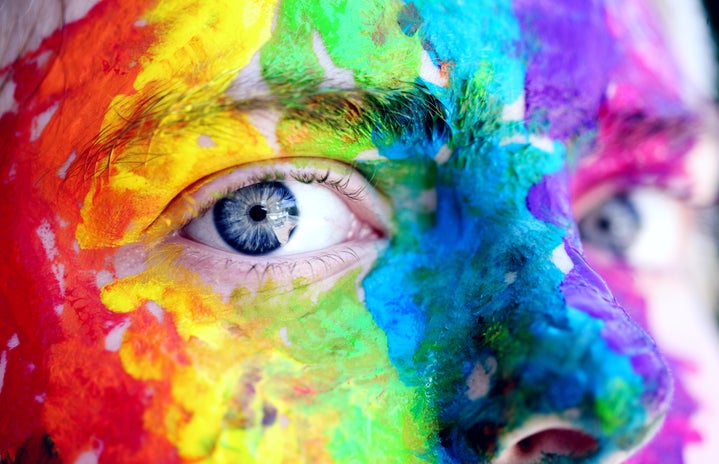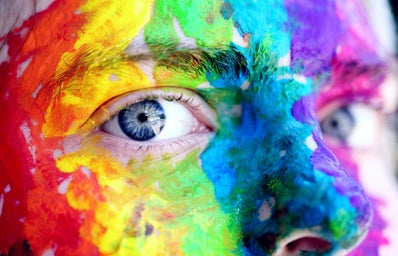As a twenty-year-old Indian female, I often find myself critiquing ideas I’d once taken at face value and internalized through years. One of those innumerable ideas is inevitably that of “Bura na maano Holi hai” (Don’t get offended, it’s Holi). Its working is pretty simple and it gets thrown around in conversations on and close to the day of Holi as a legitimizing mechanism for behavior that is evidently offensive. Imagine a scenario wherein you get out of your house on what looks like a usual morning. Just as you begin to get your chores done, your neighbor’s teenage son throws in a bucket of water in your face and a fistful of color on a piece of clothing you readied in over forty-five minutes. As he sees a frown taking form on your face, he hurriedly throws in the severely overused Holi phrase “Bura na maano Holi hai.” You smile and walk away for you know you shouldn’t have expected better since Holi is a festival where boundaries are offended. While I think we must save ourselves from judging those who’d react similarly, it is also time for us to know, want and ask for better. This overtly friendly and seemingly legitimate phrase carries the weight of several traumatic incidences, several untold stories and several good days turned into bad all cloaked behind a normalized disregard of the rights of people and animals alike.
The Indian festival of Holi is recognized worldwide as the festival that celebrates the arrival of spring, the victory of good over evil, and is known for food and colors. In essence, it’s a joyous festival and an extravaganza of sorts. However, its shades are not all radiant. To put it bluntly, modern Holi festivities come in subtle, overlooked, dark shades that we must be critical of.
As the day of Holi comes closer, people can be seen plunging past water balloons, looking in all directions before taking small leaps or avoiding the road altogether. As scary and ridiculous as it sounds, people’s consent is almost always assumed, and as normal as it sounds, verbally affirming it is never required. The ability to shield oneself from the playful menace that Holi today can be is a great manifestation of privilege. While Holi is a holiday for most, assuming that every person out on the road is willing to be smeared in gulaal, celebrates the way you do, wants to celebrate with you, or is even in a festive mood is a gross mistake and one that we must warn people especially the children from making. Those accessing public spaces on Holi can be workers providing essential services, those who’re grieving, those who want a safe celebration and also those who don’t wish to celebrate at all. In each case, it’s imperative to allow people to feel safe and respect their boundaries.
In 2018, students were baffled by the rising trend of young men flinging semen-filled balloons on women. While this drove a scientific debate on whether at all it was humanly possible to do the same, the core issue that yet again was dismissed was whether it was acceptable in the first place to fling balloons at unsuspecting strangers (who, as matter of fact, are majorly women), who by the application of basic human rights, must be able to access the public space without fear of having to compromise their dignity. The real question then is, why do we allow men to victimize women who are considered easy targets? Shouldn’t we dismantle an idea that pours legitimacy onto the violation of individual consent? Additionally, since Holi is a festival that can go from being fun to fatal in no time, it must be celebrated with caution. Holi hooliganism includes a wide variety of behaviors none of which are efficiently scrutinized. According to an article published by The Pioneer in 2019, the data of 108 ambulances showed that the number of accidents associated with drunk driving steeply increase on the day of Holi. This can have damaging effects for the drunk and also for the unsuspecting pedestrians/commuters of the roads. Similarly, there are other unacceptable behaviors like inflicting violence and groping that people get away with since they are ‘under the spell of intoxicants.’ Severe intoxication is not just accepted but rewarded as essential to an exuberant celebration of Holi. The aforementioned article from The Pioneer also mentions that many cases associated with injuries to eye and skin are reported on the day of Holi. Dermatologists affirm that Holi colors contain chemicals that are damaging for the skin and water balloons filled with the same can potentially damage the cornea of the eyes that will eventually obstruct vision. Hence, while violent celebrations seem normal, they need to be penalized to protect our own bodies. Additionally, and very importantly, animals need to be kept away from the violent manifestations of a festival they’re oblivious to the existence of.
Delhi University with the help of the police strengthened the protection offered against sexual violence to women of the varsity this year. However, while I believe that protection is imperative is not enough. Dispensing knowledge regarding sections of the penal code that punish the perpetrators of violence of all sorts and dismantling of the normalization of violation of consent during Indian festivals will have to be stopped through community efforts.
A final note for the readers: The next time someone equates your ‘no’ to a lack of festive vigor, remind them of their privilege. Remind them of the trauma that one unsolicited attack can evoke. Also, tell them that consent forms the basis of any mutually safe celebration. Lastly, inform them that your action is a protest in favor of those whose basic rights are trodden upon in the name of “Bura na maano Holi hai” and against those who hide their hooliganism behind the glamour of Indian festivities.


